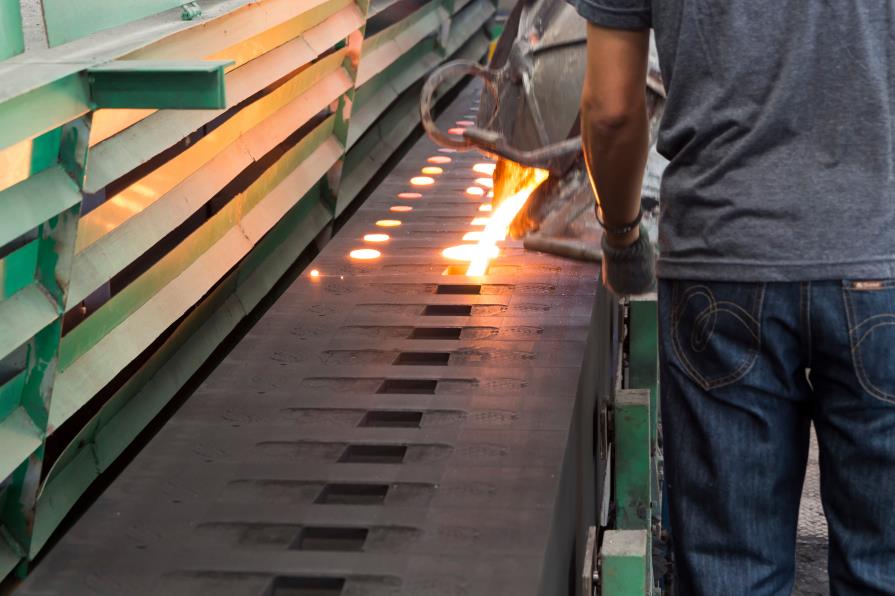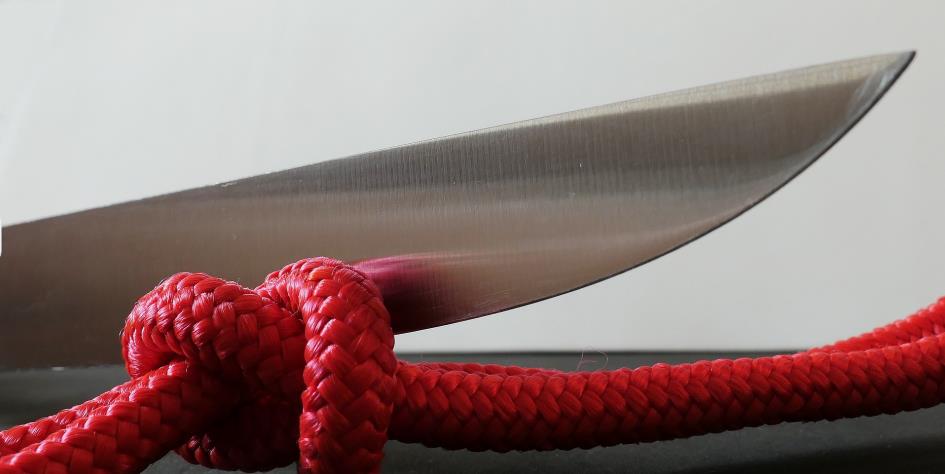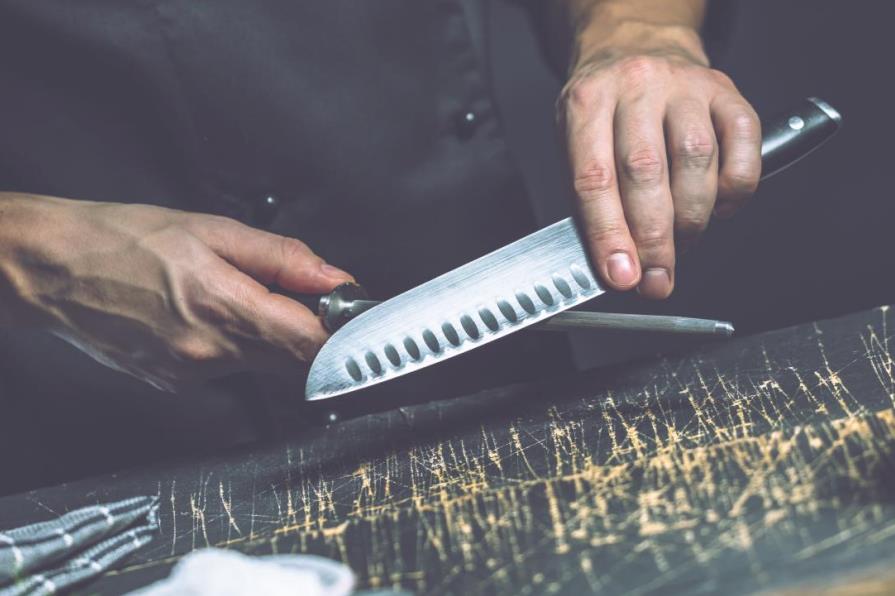Any knife’s most important part is the blade. If you’re not satisfied with the one you got, the chances are you won’t enjoy the knife as a whole.
Perhaps the most vital point to what makes a good kitchen knife blade, or any other, is the type of steel it is made from. Across many varieties of steel, there are some prevalent names. Despite offering great qualities and features, a good portion of them aren’t heard as much.
SG2 is an ideal example of this as it is considered a more than decent high carbon stainless steel that makes an excellent kitchen knife. It certainly deserves more coverage, but there are reasons why SG2 isn’t as dominant anymore.
In this article, we’ll cover everything you need to know about SG2 steel, the characteristics it brings to a knife, what to expect in SG2 steel knives, and more.
Table of contents
What is SG2 steel?
Also known as Super Gold 2, SG2 is a high carbon stainless steel developed by Takefu Steel Company, the same company that also came up with the VG-10 steel. It is mainly utilized in kitchen cutlery, Japanese chef’s knives and specialty knives to be more specific. This was also SG2 steel’s intended purpose of development.
However, not many new kitchen knives or other tools use SG2 steel anymore. Not because it is unwanted or deemed undesirable but because Takefu Special Steel no longer manufactures it. This explains why SG2 steel isn’t heard as much and is no longer found in more knives. Still, other companies continue to manufacture SG2 steel.
One of the most popular substitutes for the SG2 is the R2 steel, manufactured by Kobelco. It pretty much has the same characteristics as the SG2, but minor changes to manufacturing techniques may bring out negligible differences.
SG2 is manufactured following powder metallurgy. Due to this, SG2 is also referred to as SGPS The manufacturers heat up compacted metal powders below their melting temperature to form the actual steel. This method of forming metals has many applications, including surgical equipment and connecting rods in car engines.
SG2 steel is a prevalent choice for knife makers, especially those that manufacture Japanese kitchen knives. It provides the many qualities professional chefs and home cooks alike look for in kitchen knives – more on that below.
SG2 steel composition

| Element | Percentage (%) | What it does to steel |
| Carbon (C) | 1.25 – 1.45 | Carbon is the most essential element in any steel. The high carbon content gives a tough, hard, and enduring steel. This is why SG2 is one of the best choices for kitchen knives. |
| Chromium (Cr) | 14 – 16 | Chromium is crucial for making steel resist corrosion. Compared to the 10.5% minimum that makes steel stainless, it has more than required, ensuring sufficient corrosion resistance. Yet, it is less than the competition. |
| Molybdenum (Mo) | 2.30 – 3.30 | Molybdenum contributes to the corrosion resistance of steel. It boosts steel’s tensile strength, hardenability, and improves edge retention. |
| Vanadium (V) | 1.80 – 2.20 | Vanadium increases the strength and wear resistance of the steel. It also reduces the rate of grain growth when the steel is heat-treated, improving toughness and overall strength. |
| Manganese (Mn) | 0.40 | Manganese improves the wear resistance of the steel but is added in somewhat smaller amounts to SG2 due to the high carbon content. Regardless, Manganese content is enough to improve wear resistance and decrease rigidity at the same time. |
| Silicon (Si) | 0.50 | Silicon contributes to hardness and strength but is added mainly to remove oxygen. All types of steel have silicon to a certain amount. SG2 has about the same silicon as other high carbon stainless steel. |
| Phosphorus (P) | 0.04 | Phosphorus is actually an unwanted impurity but it increases corrosion resistance and strength. |
| Sulfur (S) | 0.03 | Sulfur is also a necessary evil for some varieties of steel. It makes the steel more brittle but eases machinability. That’s why it is added in very tiny amounts. |
Characteristics of SG2 steel knives

When you take the steel and forge it to make a blade, there is a lot to cover on the finished product. Here is everything you need to know about SG-2 steel as a kitchen knife.
Hardness
On the Rockwell hardness scale, SG2 steel can be as hard as an impressive 64 HRc. Compared to other high carbon stainless steel options, it is very hard. This hardness helps with many things, including edge retention and wear resistance. The SG2’s hardness makes it a tough one that can handle heavy-duty tasks.
Edge retention
As mentioned, hard equals better edge retention. You can count on an SG2 steel kitchen knife to keep a sharp edge for long periods. A good while will pass before you take an SG2 high carbon stainless steel knife on a whetstone.
The sharpness won’t be affected as much even when cutting denser ingredients. However, this begs the question of chipping the edge and other damages to the blade.
Durability
Being extremely hard steel, SG2 won’t deform or bend as easily compared to any softer steel. With correct use and adequate care, an SG2 steel knife can last you for many years to come.
Yet, this isn’t to say kitchen knives made from SG2 steel are indestructible. Hardness also brings out brittleness, which is something that SG2 steel keeps. This makes SG2 more susceptible to chipping than softer steels, which are more likely to bend than chip.
Like all kitchen knives, you must implement proper storage methods for your SG2 knife to prevent dropping it on hard surfaces. Additionally, avoid cutting extremely tough things. Although bones won’t be a problem, you shouldn’t use an SG2 steel knife outside the kitchen. Still, taking it out to a picnic or an outdoor feast won’t be an issue.
Wear resistance
The same as helping it keep a sharp edge for long, the hardness of SG2 has a positive impact on its wear resistance. Additionally, the added Manganese boosts this trait that you get from hard steel. Expect an SG2 steel knife to maintain the same look for years down the line.
Sharpening

SG2 steel is an easy one to sharpen. It won’t be tiresome to sharpen an SG2 steel kitchen knife, thanks to its high carbon content and being powder steel. The ability to hold an edge for long periods and easy sharpening is one of the strongest suits of SG2 and other high carbon steel knives.
You might want to equip yourself with a ceramic honing rod rather than a steel one due to the hardness. There is a good possibility that an SG2 steel knife’s blade will be harder than a standard steel honing rod, which reduces its effectiveness.
What to expect in an SG2 steel knife?
SG2 high carbon stainless steel kitchen knives offer incredible edge retention. Just as the edge retention is satisfactory enough, ease of sharpening makes it even better. Once you equip your kitchen with one, expect to use it for many years, given adequate care methods.
The kitchen knives made from SG2 are mainly Japanese-styled. These knives come in great varieties. With SG2 steel, in particular, the all-purpose Japanese kitchen knives like Santoku, Gyuto, and Kiritsuke are more popular than others. Nonetheless, SG2 steel is used for making specialty knives like Yanagiba, Sujihiki, Petty, and many more.
Read all about these different Japanese kitchen knives on our blog >>
SG2 vs. VG-10
We’ve covered the properties of VG-10 steel in one of our previous articles. This steel and SG2 are very comparable and are developed by the same company. However, VG-10 was created before, making SG2 steel a somewhat newer and improved version.
SG2 is harder and resists corrosion more than VG-10. Although SG2 is a better option at first glance, there aren’t significant differences between the two. As it is more challenging to find SG2 steel kitchen knives nowadays, VG-10 is a great secondary choice.
Ending
All in all, SG2 is exceptional for making kitchen knives, whether Japanese or any other. Even though it’s hard to come by these days, you’ll often find knives made from pretty much the same steel but under a different name.
If a good quality high carbon steel knife is what you’re after, we’re confident that you’ll be interested in the ones at HDMD Knives Store.









